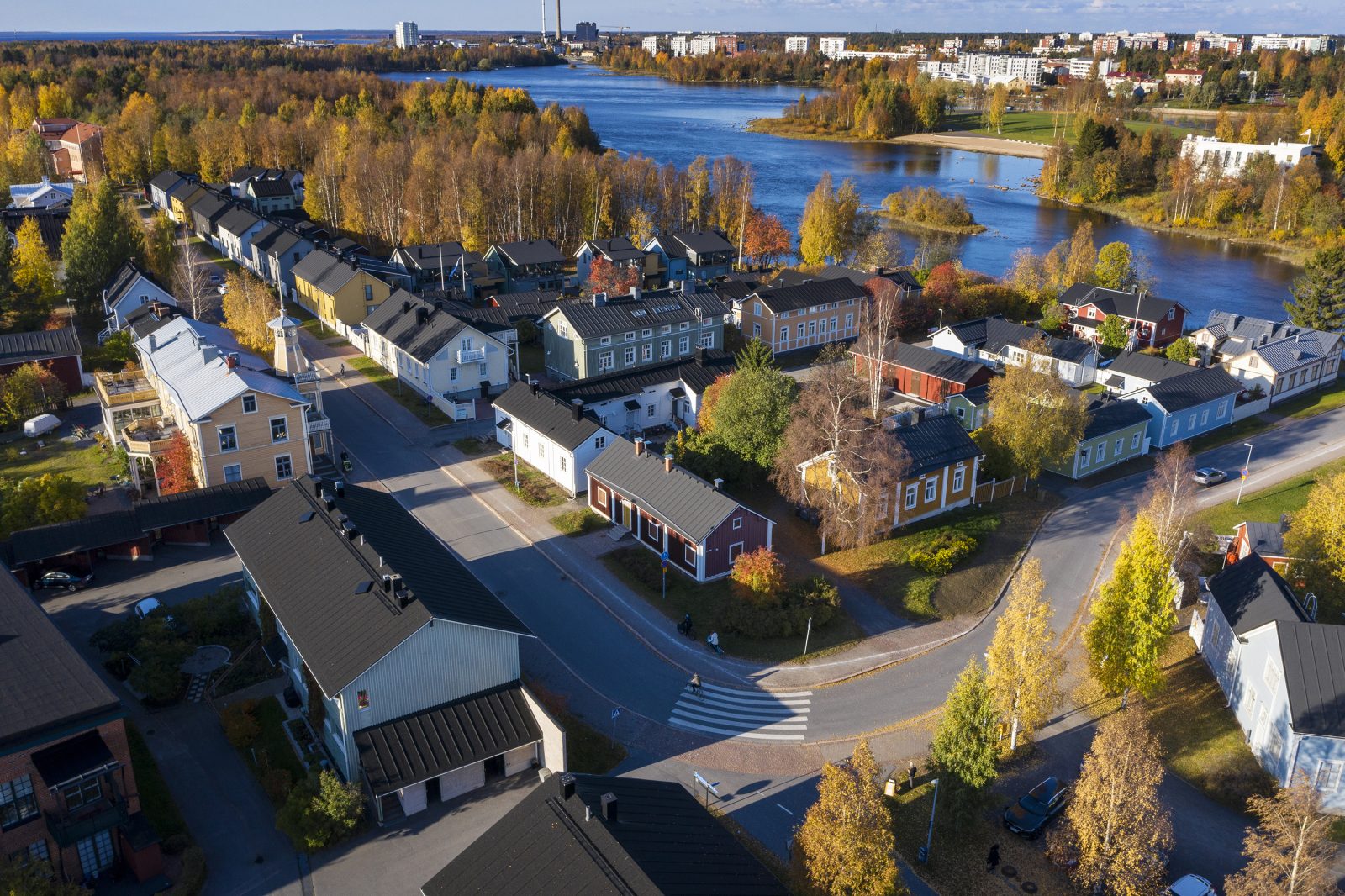Matila House, now locating on the island of Pikisaari and functioning as the museum building of The Sailor’s Home Museum, is the oldest surviving wood building in Oulu. The house is built from logs and features a main room, kitchen, bedroom and a guest room for tenants.
An old customs office in Limingantulli
The house was built between the years 1737 and 1739 to function as a customs office on the southern border between Oulu and Liminka. At the time, merchants travelling to Oulu were charged a small duty, in other words tax, for all the items they were keen to sell. Customs offices were built along main roads to work as facilities for customs officers. At the offices, the customs officers were on duty, inspected all merchandise and charged the tax from travelling merchants. Charging the small duty was given up in 1808, making custom offices useless.
On the corner of Kirkkokatu and Nummikatu streets in Heinäpää
The old customs office was relocated to the corner of Kirkkokatu and Nummikatu streets in the fifth city district in Heinäpää. The house located on plot number 7. The current address of that same location is Kirkkokatu 38. The house’s ownership changed six times during the 1800s. The area’s population mainly consisted of craftsmen. That is why among the house’s owners there were master tailors, carpenters and shoemakers.
The house´s location on a map
Though Matila House has had multiple owners throughout its history, one family’s name has left its mark on it. Sailor Isak Matilainen and his family bought the house from shoemaker Gabriel Kolehmainen in 1882. Isak died in 1898, leaving the house to his wife Greta and their 17-year-old daughter Onnia Maria. It is not known for sure whether the Matilainen family lived in the old customs office building or in a newer house they owned on the property. The new building was located adjacent to Nummikatu street. It is, however, known that after Isak’s death and between the years 1909 and 1910 his widow Greta operated a “milk shop” in the house. Milk shop meant a shop for food products at the time. This sort of public operation might explain why the family’s name has lived on with the house.
After the Matilainen family the house changed ownership a few more times. It is known that after the Matilainen family the house was no longer inhabited by the owner, but it was rented out. From the year 1911 to approximately 1944, the house functioned as a shop for Liminka co-operative dairy. Hat-maker Rauha Sofia Leskinen ran a business in the house between the years 1944 and 1949. She and her shop assistants also lived in the house at that time. The main room of Matila House was used as a business space, while the other rooms functioned as living quarters.

Matila House on the corner of Kirkkokatu and Nummikatu streets in Heinäpää in the 1960s. The apartment building seen in the back is the newly constructed Heinälinna. Photo: The collections of The Northern Ostrobothnia Museum, photographer Raimo Ahonen.
The city of Oulu purchased the plot and all the buildings on it in 1965. The building was dismantled and relocated to the island of Pikisaari in 1983. These days, a red-brick apartment building is located in its place on the plot.
New life as a museum in Pikisaari
In the 1960s, the goal was that the whole residential quarter surrounding the Matila House would have been turned into an open air museum area. The project was not carried out, and the house was turned into a museum in 1989.
Matila House owners
1809-1832 Customs inspector Hans-Gabriel Berg, the house was called Pärk’s house
1832-1856 Master tailor Palmqvist
1856-1871 The heirs of master tailor Palmqvist
1871-1878 Carpenter J.O Sandstöm
1878-1882 Shoemaker Gabriel Kolehmainen
1882-1898 Sailor Isak Matilainen
1898-1910 Widow Greta Matilainen
1910-1919 Onnia Matilainen
1919-1921 Supervisor Ernst Neuberg
1921-1944 Worker Lauri Herman Hautajärvi
1944-1965 Heikki Hautajärvi
1965- The city of Oulu
